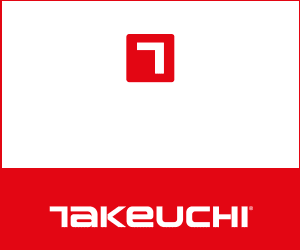Designing a bespoke support structure for a major excavation takes skill and ingenuity. But it’s not only the big jobs that test the engineer’s skill. At Dunmore East, a picturesque fishing village in County Waterford, Ireland, contractor McGinty & O’Shea is about half-way through a two-year sewer upgrade which has entailed some tricky engineering challenges.
Foremost of these was the construction of a manhole chamber in a three-sided cofferdam built into the harbour wall on the Strand.
Difficult ground conditions made the task of supporting the sides of the excavation very complicated. But the biggest challenge was the fact that the top 4m of the 7m-deep excavation was open on the side facing out to sea where the wall had been dismantled.
Most excavations are supported by transferring the load from one side to the opposite side. But with nothing solid behind the top 4m of sheet piles on the seaward side of this excavation, an alternative solution was needed.
The textbook solution would normally be to use the two perpendicular sides to provide a ‘shear key’ by welding the frame to the sheet piles and bracing the third side against them. But this wasn’t possible here as the soil lacked sufficient shear strength.
Groundforce Ireland (the Irish wing of UK hirer VP’s specialist below-ground plant division) proposed an alternative in which the load was transferred to two 14m3 concrete thrust blocks cast on the beach in front of the excavation. “The thrust blocks were cast just below the level of the beach and the lateral loads were transferred to them from the lower two frames using two 80-tonne hydraulic struts,” explains Groundforce project manager Joseph Lenihan. “This provided the lateral restraint and prevented the cofferdam from slipping out onto the beach,” he adds.

With lightweight interlocking trench sheets tack-welded to the frames on the open side to prevent fines washing into the excavation at high tide, and with the thrust blocks buried beneath the sand, there was no visible sign of the support system from the beach. Groundforce supplied its Mega Brace and Maxi Brace hydraulic frames to support the L603 sheet-piles and an Ms4 piling hammer to install and extract the piles. Edge protection and ladder access systems were also provided. With the excavation thus supported, McGinty & O’Shea installed the cast-in-situ deep manhole before backfilling, rebuilding the harbour wall and resurfacing the pavement.
Another challenge arose with the excavation for the new harbour pumping station. Here it was only possible to drive sheets on one of the four sides and a sheet toe-in was not possible because of an outcrop of hard rock. The solution was to employ two levels of Mega Brace frame to support the sheet piles and transfer the loads onto the rock on one side of the excavation and to the mass concrete foundations of a neighbouring building on the opposite side.
The complexity of the project demanded an unusually high level of specialist engineering and co-operation between main contractor and supplier. “It was all pretty designintensive,” says Lenihan.
This article first appeared in the September 2014 issue of The Construction Index magazine. To read the full magazine online, click here.
To receive you own hard copy each month in traditional paper format, you can subscribe at
http://www.theconstructionindex.co.uk/magazine#
Got a story? Email news@theconstructionindex.co.uk


